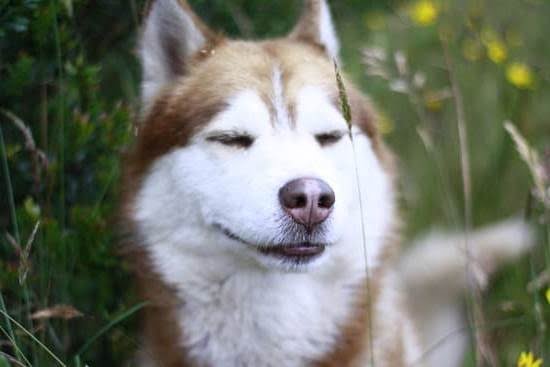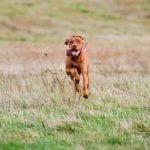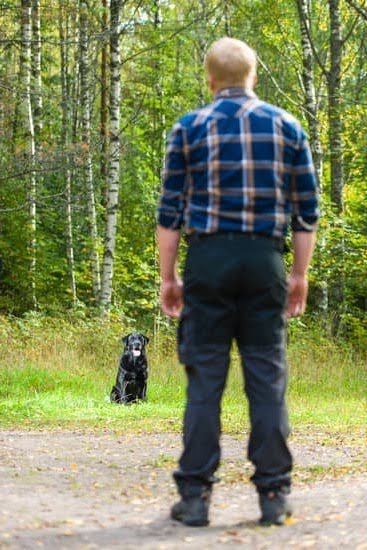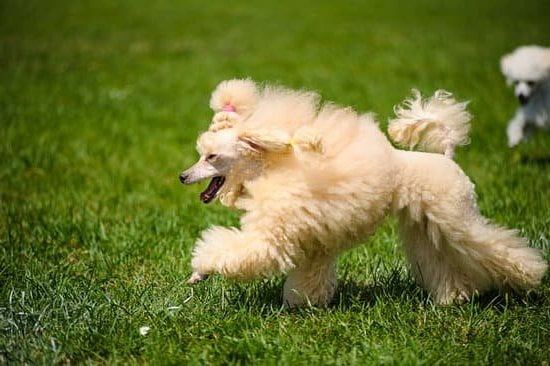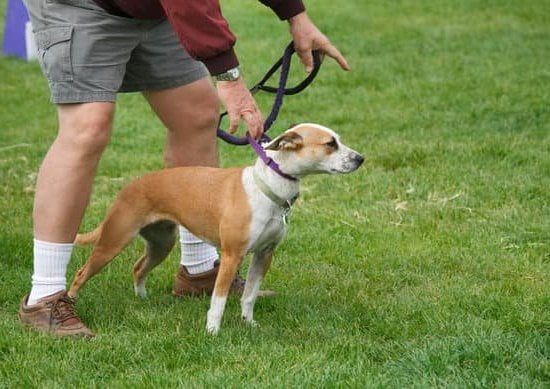Introduction to Clicker Training
Clicker training is a type of positive reinforcement training method for dogs that relies on operant conditioning principles. By using a sound-based marker – such as a clicker or whistle – you can quickly and accurately mark desirable behaviors and reward them with treats or praise. This type of conditioning allows dogs to understand which behaviors we desire and reinforces those responses, increasing their likelihood in the future. What’s more, it has been proven to be faster than traditional training methods and much more reliable.
One clear benefit of clicker training is that it is incredibly easy to use once the technique is understood. Simply click when the desired behavior occurs and follow up with either a treat or praise. Over time, your dog will learn which actions earn him rewards, making him inclined to repeat them over again. Additionally, clicker training can foster positive relationships between owners and their dogs by helping owners gain a better understanding of how their dog thinks and behaves, leading to stronger bonds.
Clicker training also helps prevent bad behaviours from arising as dogs understand what is expected from them when it comes to acceptable behaviour patterns. Furthermore, because this type of conditioning does not involve physical punishment or coercion techniques it helps to make sure that your relationship with your pup remains healthy, happy, long-lasting, and stress-free for both parties.
Preparing Your Dog for Clicker Training
Before you begin the process of clicker training, it is important to take the time to establish a trusting relationship with your dog. While you may think your pup knows who’s boss, it is important that they trust you and understand that all the commands and instructions are coming from you, as their loving protector and owner. Spend some time playing and engaging with your dog so they can begin to recognize you as someone they can trust and follow orders from.
After that foundation is in place and it comes time to use a clicker, introduce the sound of the clicker by using it during play or when giving treats. You want your pup to start associating that sound with something positive, like a reward – making them more compelled to follow through with any directions you give in conjunction with the ‘click’ noise. Initially show them how rewarding a correct response can be by immediately giving treats or verbal praise upon hearing that noise.
Once your pup has begun understanding this concept, begin introducing verbal commands prior to giving the ‘click’ noise – allowing for more detailed instruction for specific activities or behaviors. With repetition, your pup will soon make this connection; when he hears the clicker sound followed by a treat or reward that means he did something correctly!
Clicker Training Principles
Clicker training is an effective and modern way to train your dog. The method operates on a simple three-step process of mark, reward, and repeat to help reinforce desirable behaviors. With patience and consistency, it is possible to convey to your canine companion that particular behaviors produce positive outcomes. What follows are principles to craft an effective clicker program and the rules necessary for success:
• Mark the Behavior: Marking the precise moment when a desired behavior is demonstrated with a distinct “click” sound communicates recognition in an unambiguous manner. Remember that sharp, sudden movements might startle dogs and should be avoided during this important step.
• Reward Immediately: As soon as the click sound is made, rewarding your dog with treats immediately helps to accentuate the conditioned connection between his behavior and its positive reinforcement.
• Be Consistent: For best results, practice marking and rewarding specific actions in an identical way across different environments. Avoid doing things inconsistently since this will lead to confusion or frustration among canines due to mixed signals they may be receiving from their owners or trainers.
• Change Positions: Moving closer or farther away during the repetitive nature of clicker training allows you to assess how your dog’s level of understanding grows over time without overwhelming him at any given moment by staying in one place while delivering treats each time he performs successfully.
• Break Down Steps: Even basic tricks require coordination across multiple physical steps as opposed to just one giant leap into action. Segment these steps into smaller pieces that can be focused on sequentially so your pup learns not only what you want him to do but also how he should be doing it.
By following these principles for crafting an effective program along with suitable rules for success, even novice handlers have what they need in order to train their canines using clicker methods efficiently and productively!
Teaching Through Clicker Training Routines
Clicker training is a great way to get your dog to learn quickly and efficiently. In order to achieve this, you will need to write out specific routines and plans of action for your dog using clicker training techniques. By breaking down the commands and actions into small steps, your pup can more easily understand what you want them to do. Additionally, it’s important to remain patient during training sessions. Whether it takes five minutes or two hours, be sure to stay consistent with the pace of learning so your dog can adjust accordingly. The best way to use a clicker as part of these training routines is by associating clicks with treats or rewards; each time they do something correctly, offer them a treat as immediate reinforcement that they have been doing a good job. As your dog progresses in their learning journey, increase the difficulty of tasks gradually and use positive affirmation for all steps taken. Take regular breaks throughout your session so both you and your pup can have time away from the clicker, but don’t forget to end the session with some type of reward to let them know that all their hard work was much appreciated! With patience and commitment, you and your pup are sure reach success with clicker training in no time.
Utilizing Clicker Training Rewards
Using a clicker to train your dog can be an incredibly effective way to positively reinforce good behavior. Clicker training rewards your pup with treats and praise every time they have done something right following the “clicker sound”. This method of positive reinforcement encourages them to repeat the same desired action over again, while ignoring or discouraging unwanted behavior. To get started, find a small handheld device that makes a clicking noise when activated. Establish a specific word that signals they should stop whatever they are currently doing or behave in a certain way (i.e., the “command word”). Once your dog has become familiar with these directions, you can begin the process of reinforcing good behaviors with positive responses. After you give the command word, make sure you immediately use the clicker and issue some sort of reward such as treats, verbal praise, petting or playing a game. It is important to vary the type of reward to keep your pup motivated and continuously learning throughout the training process!
Preventing Clicker Training Mistakes
When it comes to clicker training your dog, it is important to remember to be consistent and take your time. In the early stages, make sure to use rewards consistently, so as not to accidentally reinforce bad habits. Also, don’t move on until the step has been thoroughly mastered; when you are ready for the next lesson, give them a new command or action and start from the beginning so that they understand exactly what you are expecting from them. Furthermore, don’t forget the power of praise! Positive reinforcement is essential during clicker training; rewarding good behavior with verbal praise helps to motivate them and reinforces positive behaviors. Be sure to establish boundaries early on in the process by enforcing rules as soon as they are introduced; otherwise you risk inviting unacceptable behaviors into your household. Lastly, be patient with yourself and your pet; clicker training might take some time so stay positive and maintain an upbeat attitude throughout the process.
Expanding Clicker Training
Once your dog has mastered the basics of click training, you can start expanding on their knowledge by introducing new exercises and activities. This will keep them stimulated, help you both bond and make the process of learning more rewarding. Here are some ideas for things to do with your pet:
1. Advanced obedience training – Take your basic obedience commands further by adding variety to how they’re taught or introducing distractions such as other animals or people. Make sure to reward your pup whenever they get it right!
2. Trick training – Challenge your pup’s brain even more by teaching them some fun tricks like sitting pretty, spinning in circles, or catching treats! With patience and consistency, they’ll pick this up quickly!
3. Agility competitions – Perfect for energetic dogs who love a challenge! Build an agility course consisting of items such as tunnels, jump poles and weave poles then use the clicker to train them to interact with each obstacle correctly. Before you know it, you’ll have a certified agility master ready to take home top prizes at competitions!
4. Break long tasks down into steps – Teaching complex behaviors can be a bit daunting so breaking them down into smaller steps can make it much easier for your pup (and you!) to process and achieve success faster. Use a combination of verbal cues and clicks when teaching these techniques — this will help create visual memory for your pooch when practicing solo or within large groups or environments.
5. Constant reinforcement – Don’t forget that all rewards aren’t edible — providing verbal praise is just as important after each successful command given from our canine friends! Too many trainers forget this part but having supportive speech will help build trust and pave the way to longer term behavioral excellence beyond simple obedience results.
Clicker Training Troubleshooting
Clicker training can be used to address difficult training issues in dogs. In some cases, your dog may have been exposed to negative experiences or was not disciplined properly when learning a new skill. This could lead to them being resistant when asked to perform the task. Clicker training is an effective way to help teach dogs that the behavior you are asking for is desirable and will result in a reward.
To start clicker training, select a sound that will serve as the marker of when they have performed the desired behavior accordingly. Each time they do this, they should be given an immediate verbal compliment and/or a reward such as treats or toys. To make sure your cues remain consistent, repeat the same cue every time your dog accomplishes the task. It may also be necessary to occasionally set up scenarios where completing the desired task is easier for your dog so that they have successful experiences often and start making progress faster.
Once you have established consistency with certain tasks, gradually increase difficulty by adding distractions or increasing distance from you during trials. Eventually, you should be able to remove rewards from the equation or only require verbal praise while still obtaining excellent results from your canine companion!
Adding Variety to Clicker Training
In addition to basic Clicker Training principles, there are other different techniques and games you can use in order to further your dog’s education and increase his excitement over learning new behaviors. For example, “free-shaping” is a popular technique used during Clicker Training sessions. In free-shaping, the owner does not give any verbal or hand commands; instead, the clicker is used to reinforce the specific behaviors that are desired by the owner. The goal of free-shaping is for the dog to understand what behavior will earn him a reward from his owner and then initiating it on its own.
Another great way to add variety in your training sessions with a clicker is through shaping sequences. This involves teaching your dog complex behaviors by breaking them down into small steps and reinforcing each one with a click/treat reward every time he completes it correctly. This also teaches your dog about contingencies, where one action leads to another one-and eventually reinforces itself-in order for him to literally “feel” how two disparate behaviors can be linked together.
To make it even more interesting and fun while teaching complex behavior patterns, you can play memory recall games such as ‘Which Hand?’. This game consists of hiding treats in various places (like behind furniture, etc.) around a room; when all of them have been located by the dog using his nose, he must remember which spot contained which treat when you call out the cues like “left” or “right”. Furthermore, this game can be modified in order for the dog to remember more complicated sets of commands rather than just left/right; by establishing mini sets of commands such as ‘left-under’ or ‘right-behind’, he will begin forming relationships between those words and where their corresponding treats are hidden!
Final Thoughts
The bond that comes with successfully potty training a puppy or adult dog is priceless. With clicker training, you create an atmosphere that allows both the trainer and canine to learn quickly and effectively. You establish secure signals while having fun in the process. This type of communication builds trust between both parties involved and strengthens the relationship, providing long-term benefits for the pup. Not only is this form of learning beneficial for behaviors such as coming when called, ignoring other dogs or people, but it is also successful in teaching tricks like lying down, exposing teeth or sitting pretty on command. So why not give it a try? Clicker training provides interactive and positive experiences for pet owners and pups alike—which always leads to a good outcome for everyone!
Remember that patience and consistency are key when establishing clicker training methods with your pup, as being inconsistent might cause confusion and stall progress. Positive reinforcement goes a long way in helping your pup understand what you expect from them. With each new activity, accuracy is built slowly over time through copious amounts of praised-based work. Be patient and generous with rewards so your pup knows they’ve done well! Additionally, be sure to start each session with something your pup knows well before moving onto more challenging exercises so that they don’t get overwhelmed or bored during the experience. Finally, make training sessions enjoyable! Stay away from chores and homework if possible; instead focus on meaningful bonding activities that double as lessons to help your pet become a better furry friend!

Welcome to the blog! I am a professional dog trainer and have been working with dogs for many years. In this blog, I will be discussing various topics related to dog training, including tips, tricks, and advice. I hope you find this information helpful and informative. Thanks for reading!

